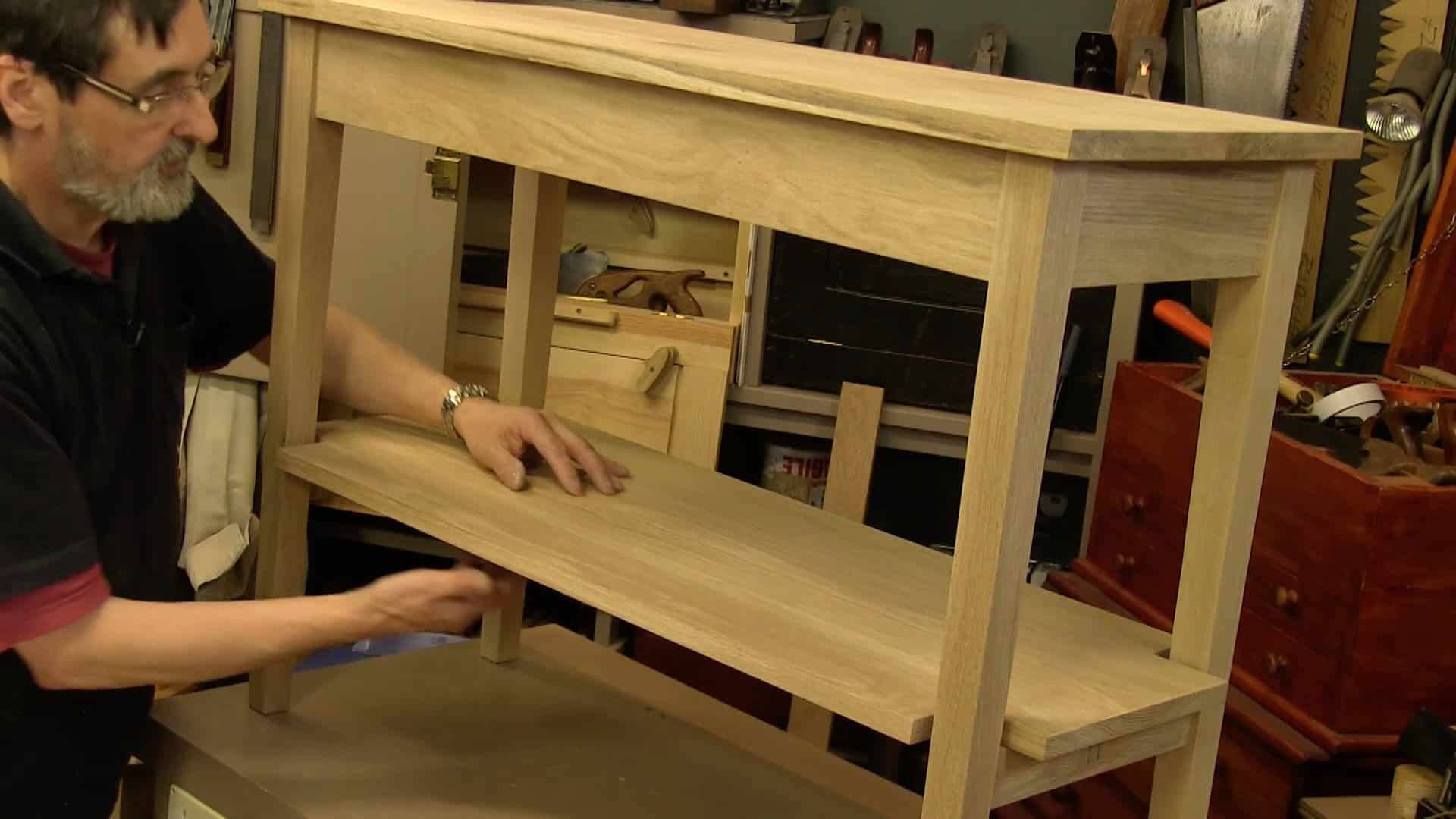Sofa Table: Episode 6
Posted 14 May 2014
This is an episode in a paid series. Want to watch it? You just need to sign up as a paid member, and you can enjoy this video and many other videos we think you will love.
In this final episode, Paul cuts the tabletop to size and shows how he would deal with any blemish in the surface. He then scrapes and fits both the shelf and tabletop, finishing of by fixing them in place.


Fantastic! I love tables. It turned out beautiful Paul. I’m looking forward to using the new skills you’ve taught. Thanks again.
Another great video. I recently purchased a scraper like the one used in this video. It is amazing how smooth it makes the surface. I was wondering where to get the “Sellers” tape? (Kidding). My wife can’t wait to get the finished table!
Everything works if you use Mozilla Firefox
another fantasic series completed well done to all the team, it does just show how far behind i am falling though but i will catch up, thats the thing i like about this process i am progressing at a speed that suits me thanks Paul and team
Congratulations!
Paul,
I just love doing tables, and I love the way you imprint simplicity and elegance into this classical pieces. Fancy stuff is nice too, but sometimes going back to the basics is just what I needed.
Thanks Paul!
Any thoughts on finishes?
I just finished a table top but will have to redo it. Belt sanders…what can I say?
I have and use my #80 scraper, but do not get the shavings you are getting. Do you sharpen it the same way you sharpen a plane blade before adding the “burr”?
Hi Tim take a look at this it should answer all of you questions
https://woodworkingmasterclasses.com/2014/03/80-cabinet-scraper/
Great series Paul and a beautiful piece of furniture at the end. Thoroughly enjoyed it, thanks!
Hi,
Greate video as ussualy. Small question. Do you have any experience to use winding sticks in order to “plane” or “un-twist” the aprons and legs before attaching with the top?
Regards,
Vitaly
All components of any project would normally be checked for twist before joinery begins on any of the components. There are times when one component can be corrected by say three other components countering pressure, but the one will always influence the others even though it may not be visible. Usually you can stack up boards and see how they lay against one another.
Dir Sir,
Thank you so much for the wonderful video. This is a novice question, but why didn’t you leave a 1/2 inch around the corners of the shelf. Is there a wood movement issue if you have it touching the legs?
There are conditions where this could be an issue. Much of the time it will depend on the width of the board. On a 3′ wide table you must make an allowance for some expansion. In this case the shelf is anchored and the tenons are long enough that there is no way the tenons would give if the wood expands. When wood is constrained so it cannot expand it not always a problem. Imagine placing a sponge in a vise and soaking it with water. The sponge cannot absorb or expand because of the strength constraining it. You have to decide for each situation whether the wood is going into a situation where such things can or will occur. Also, I am using turnbuttons for constraints so the wood cannot belly either.
Hi Paul
What is the countersink bit you use? it seems far more efficient than the ones I have.
Thanks
Tom,
I noticed the same thing and purchased one from Amazon. It cuts MUCH smoother than the standard countersink bit I had been using. Pretty pricey though ($25)
Here’s the info on the one I bought on Amazon:
KEO 53523 cobalt steel single-end countersink, tin coated, 90 degree point angle, round shank, 3/8 shank diameter, 5/8 body diameter.
Hope this helps.
Don
In the US, Harbor Freight sells them for $9. I don’t know how the $9 one will compare with the $25, but I’ve been using the HF one.
https://www.harborfreight.com/countersink-and-deburring-tool-set-3-pc-61629.html